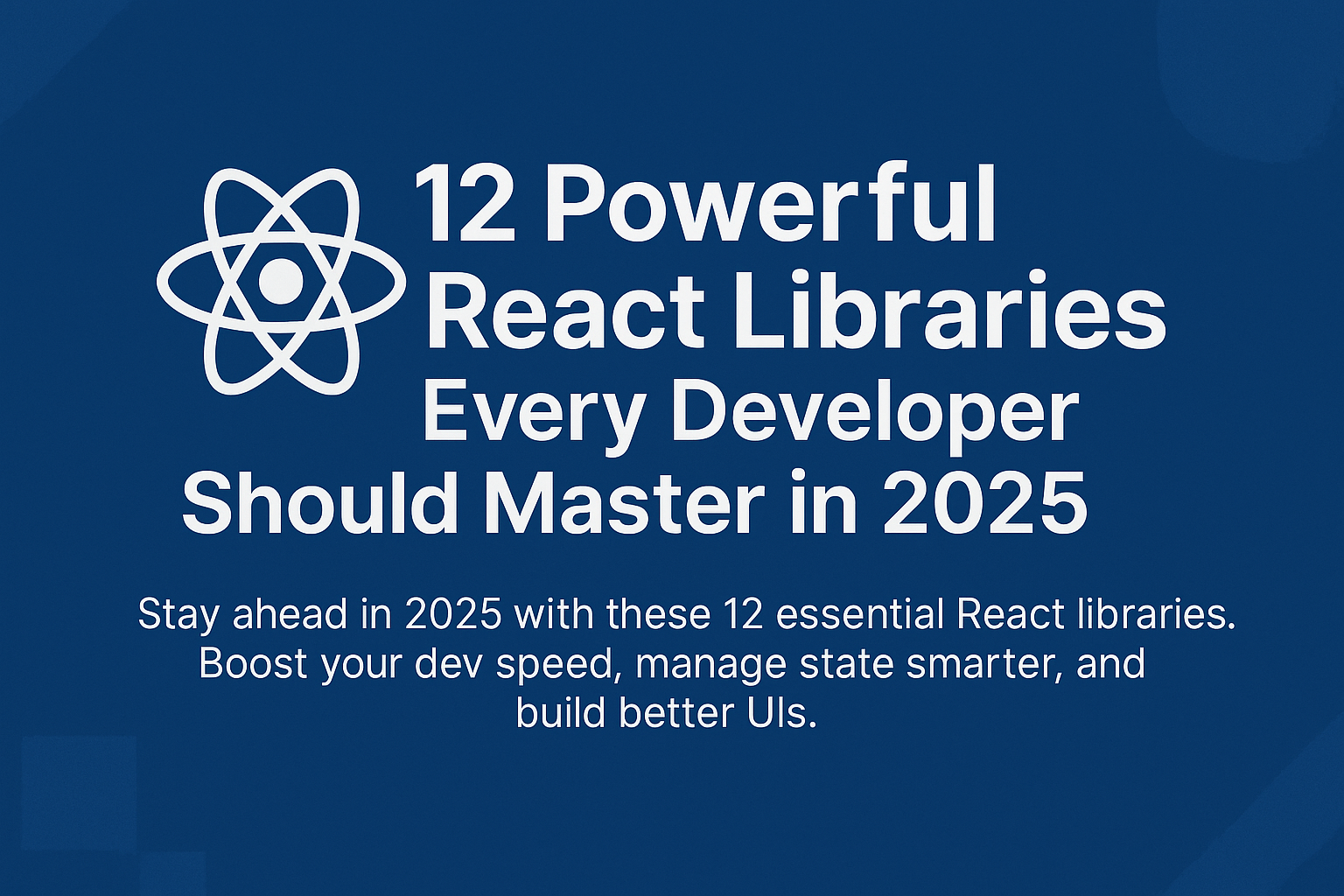12 Powerful React Libraries Every Developer Should Master in 2025
6/14/2025

reacReact continues to lead the frontend world in 2025, but with its simplicity comes the challenge of choosing the right tools. Whether you're a solo developer or working on a team, these 12 libraries will help you work faster, write better code, and build more dynamic web apps.
1. React Router
What it does: Declarative routing for single-page React apps.
React Router is still the industry standard for managing routes in React. It supports nested layouts, lazy loading, and dynamic route parameters.
2. Zustand
What it does: Minimal state management using hooks.
Zustand is gaining popularity for being tiny, fast, and avoiding boilerplate. It works great for global state in small-to-medium apps.
3. React Hook Form
What it does: Performant, hook-based form management.
React Hook Form simplifies validation and reduces re-renders in complex forms. It’s a must-have for building accessible, fast forms.
4. TanStack Query (React Query)
What it does: Fetch, cache, and sync server state.
React Query (now TanStack Query) helps you manage API requests with automatic caching, background updates, and retry logic.
5. Framer Motion
What it does: Declarative animations for React.
Framer Motion is a high-performance library for creating animations, gestures, and transitions without writing CSS keyframes.
Ad
☕ Find Your Perfect Cup with Peet’s Coffee
Whether you're craving a bold French Roast, a smooth Cold Brew, or calming Herbal Tea, Peet’s has something for every palate. Explore a world of flavor—from Organic Matcha and Oolong to Major Dickason’s Blend, Single Origin Coffees, and Mighty Leaf Teas. Perfect for gifting or upgrading your own morning ritual, Peet’s offers everything from K-Cups, Teaware, and Chemex Filters to indulgent Hot Chocolate and Half-Caf options.
6. React Helmet
What it does: Control your document’s <head>.
React Helmet lets you dynamically set meta tags, page titles, and social tags—essential for SEO in single-page apps.
7. React Markdown
What it does: Render Markdown content as React components.
Perfect for blogs, docs, or CMS-driven sites where content is stored in Markdown. It supports plugins like remark-gfm.
8. React Testing Library
What it does: Tests components like a user would interact with them.
It encourages good testing practices by focusing on user behavior, not implementation details.
9. Recharts
What it does: Charting with React components.
If you need bar, line, or pie charts quickly without dealing with D3 directly, Recharts is clean and customizable.
10. Formik
What it does: Form state management with validation support.
Formik provides a structured way to handle form inputs, validation, and submission logic—often used with Yup.
11. React Icons
What it does: Use icon packs (FontAwesome, Material, etc.) as components.
React Icons makes it easy to import and style only the icons you need. Works great with Tailwind and other styling libraries.
12. React DnD
What it does: Drag-and-drop interface with full control.
Built by the React community, this gives you precise control over draggable interfaces like Kanban boards.
💡 Final Thoughts
The React ecosystem is thriving, but that also means constant change. The libraries above are ones you can trust—actively maintained, battle-tested, and developer-friendly.
Save this post, revisit it throughout the year, and let me know which libraries you’re using in production!